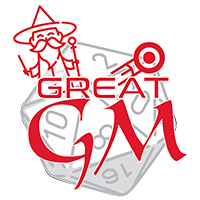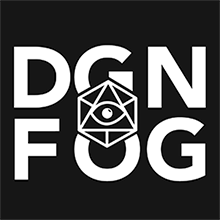Initiative, Actions, and Attacking
Initiative
When combat begins, the player who initiated the combat takes a turn immediately. Once this is done, the gamemaster ranks the combatants in order of their initiative statistic, from highest to lowest, and the first round begins. In each round, the character with the highest initiative goes first, and then each character takes a turn in order of highest to lowest. If there is a tie, the GM decides which character or creature goes first. Once the last character has completed their turn, the round ends, and the character with the highest initiative takes the first turn of the next round. Repeat this sequence until the conflict ends.
Initiative Statistic
- Your character’s initiative is equal to their Perception plus their Agility, plus any bonuses from equipment or perks.
- A Creature NPC’s initiative is equal to their Body + Mind scores
- A Character NPC’s initiative is calculated the same as player characters, though some powerful NPCs add bonuses.
Actions
You can attempt one minor action on your turn in combat. You can take one additional minor action by spending 1 Action Point, and you can take one additional major action by spending 2 Action Points, but the difficulty of any test attempted on that second major action is increased by 1. You may take your actions in any order you wish during your turn. You cannot take more than two minor actions and two major actions on your turn by any means. You cannot take more than one movement action per turn.
Minor Actions
- Aim: Re-roll 1d20 on the first attack roll you make this turn.
- Draw Item: Draw one item carried on your person or pick up an object or item within your reach. You may put an item away as part of this action.
- Interact: Interact with your equipment or environment in a simple way, like opening a door, or pushing a button.
- Move: Movement action. Move up to one zone, to any position within Medium range. Alternatively, stand up from a prone position.
- Take Chem: Administer a dose of a chem that you are holding, targeting yourself or a willing character within your reach. If you’re not holding the chem, then you need to draw it first.
Major Actions
- Assist: You assist another character with their next test. When the character you are assisting takes their turn and attempts their task, you provide assistance. If you have not yet acted this round, you may give up your turn later in the round to assist an ally when they attempt a skill test.
- Attack: Make a melee or ranged attack, as described in Making an Attack
- Command an NPC: If you have an allied NPC under your command, choose a single major action for them to take. If the action requires a test, then you automatically assist using your CHA + Speech (if the NPC is a person), CHA + Survival (if the NPC is an animal), or INT + Science (if the NPC is a robot).
- Defend: You focus on protecting yourself. Make an AGI + Athletics test with a difficulty equal to your current Defense. If you succeed, add +1 to your Defense. For 2 AP, add an extra +1 to your Defense.
- First Aid: You try to quickly patch the wounds of yourself or an ally. Make an INT + Medicine test, with a difficulty equal to the number of injuries the patient has, and increase the difficulty by 1 if you are trying to perform first aid on yourself. If you succeed, you can either: 1) Heal HP equal to your Medicine rating or 2) Treat one injury the patient is suffering from or 3) Stabilize a dying patient.
- Pass: You choose not to do anything
- Rally: You grit your teeth, catch your breath, and prepare yourself. Make an END + Survival test with a difficulty of 0, and save any Action Points you generate. The GM may allow you to use a different ATT + skill for this action depending on how you describe it, such as CHA + Speech to inspire your allies.
- Ready: Describe a situation you expect to occur, and choose a major action you will perform when it does. If that action occurs before the start of your next turn, you may perform that major action immediately, interrupting other characters’ actions as necessary. If more than one character has readied an action for the same situation, their readied actions occur in initiative order.
- Sprint: Movement action. You move up to two zones, to anywhere within Long range.
- Test: Perform a skill test for an action not covered by the other actions, with the gamemaster’s permission.
Making an Attack
- CHOOSING WEAPON AND TARGET
- CHOOSE HIT LOCATION:
- ATTEMPT A TEST
- Melee Weapon: Roll a STR + Melee Weapons test, with a difficulty equal to your target’s Defense.
- Ranged Weapon: Roll an AGI + Small Guns, END + Big Guns, or PER + Energy Weapons test (based on the ranged weapon you’re using), with a difficulty equal to your target’s Defense. This is modified by the range to the target.
- Thrown Weapon: Roll a PER + Explosives or AGI + Throwing test, with a difficulty equal to the target’s Defense, modified by range.
- Unarmed: Roll a STR + Unarmed test, with a difficulty equal to your target’s Defense.
- DETERMINE A HIT LOCATION
- INFLICT DAMAGE
- Resistances: The target reduces the total damage inflicted by their Damage Resistance against the attack’s damage type, on the location hit. Characters and creatures have different DRs for different types of damage: physical, energy, radiation, and poison.
- REDUCE AMMUNITION
Select one weapon you are currently wielding. Then, select a single character, creature, or object as the target. If you’re using a melee weapon, the target must be visible to you and within your reach. If you’re using a ranged weapon, the target must be visible to you.
You may choose to target a specific part of a target creature or character. This increases the difficulty of the attack by 1.
If you passed your test, roll 1d20 or a hit location die to determine the part of the target you hit. If you choose a specific hit location already, you hit the chosen location instead.
Roll a number of Combat Dice (CD) listed by the weapon’s damage rating, plus any bonuses from derived statistics, or from AP or ammo spent. Reduce the target’s health points by the total rolled.
If you made a ranged attack, remove one shot of ammunition, plus any additional shots of ammunition spent on the attack. If you made a thrown weapon attack, remove the thrown weapon from your inventory.
Sequence of Play
- INITIATE COMBAT
- INITIATIVE
- TAKE TURNS
- BEGIN NEW ROUND
The character who initiated the combat takes a single turn before the first round.
List all characters in order of their Initiative statistic, from highest to lowest.
Each character, in order from highest initiative to lowest, takes a turn.
Once every character has taken a turn, the round is over; begin a new round, repeating step 3 and step 4 as many times as needed to resolve the conflict.
Spending Luck to Act Faster
You can also spend Luck points to interrupt the normal initiative order and take your turn earlier in the round. You must do this at the end of another character’s turn but before your turn in the initiative order—you cannot interrupt another player while it is their turn. Once you have taken your turn, you do not take another at your normal point in the initiative order, until the next round.
When you spend a Luck point to take your turn earlier, you take your turn immediately, can take one minor and one major action as normal, and can spend Action Points to take additional actions as normal. You are still limited to the number of actions you can take in a round, and can be interrupted by the Ready action as normal.
Prone
You may be knocked prone by attacks, hazards, or complications. You may also drop prone willingly, at the end of any movement action you perform. Being prone has the following effects:
- When you’re prone, you crawl. The Move action becomes a major action, rather than a minor action, and you cannot take the Sprint action.
- While you’re prone, enemies at Medium range or further add +1 to the difficulty of any attacks against you.
- While you’re prone, enemies at Close range reduce the difficulty of attacks (including melee attacks) by 1, to a minimum of 0.
- While you’re prone, you can re-roll any cover CD you have.
Action Points in Combat Encounters
During combat, you can spend Action Points to do the following:
- Buy d20s (1–6 AP): Buy bonus d20s for a test, before the dice pool is rolled, but after the GM sets the difficulty. The cost increases for each die purchased: the first d20 costs 1 AP, the second costs 2, and the third costs 3. No more than three bonus d20s may be rolled for a single test, including any d20s from perks or traits.
- Obtain Information (1 AP): Ask the gamemaster a single question about the current situation, based on your test. The GM will answer truthfully, but the answer might not be complete.
- Take Additional Minor Action (1 AP): Take 1 additional minor action in your turn. You can only take a total of 2 minor actions in a single round.
- Take Additional Major Action (2 AP): Take one additional major action on your turn. Any skill test you must attempt is increased in difficulty by +1. You can only take a total of two major actions in a single round.
- Add Extra Damage (1-3 AP): On a successful melee attack or thrown weapon attack you can spend AP to add 1 CD per AP spent, up to a maximum of +3 CD for 3 AP.
Remove these ads. Join the Worldbuilders Guild









Comments